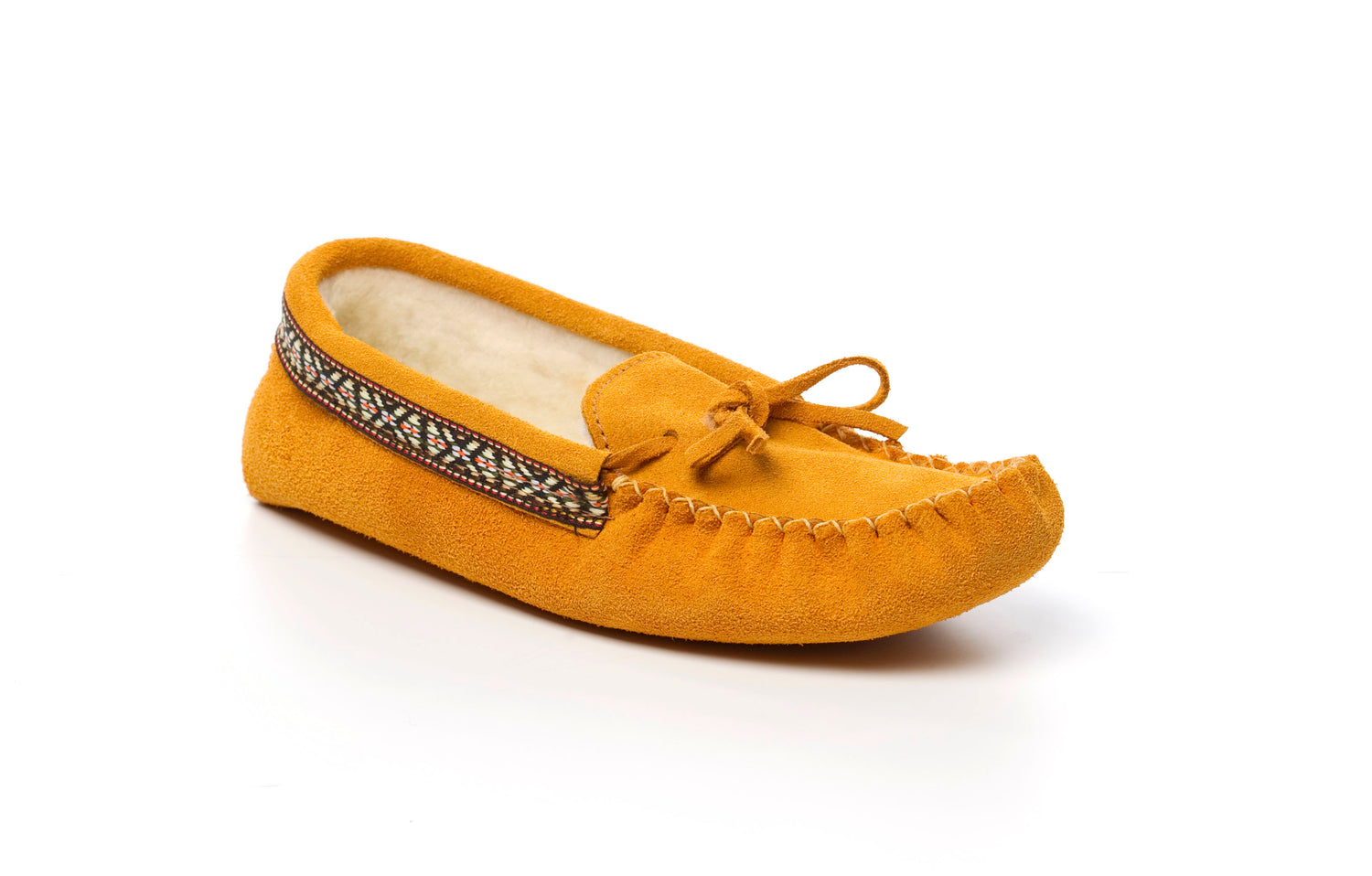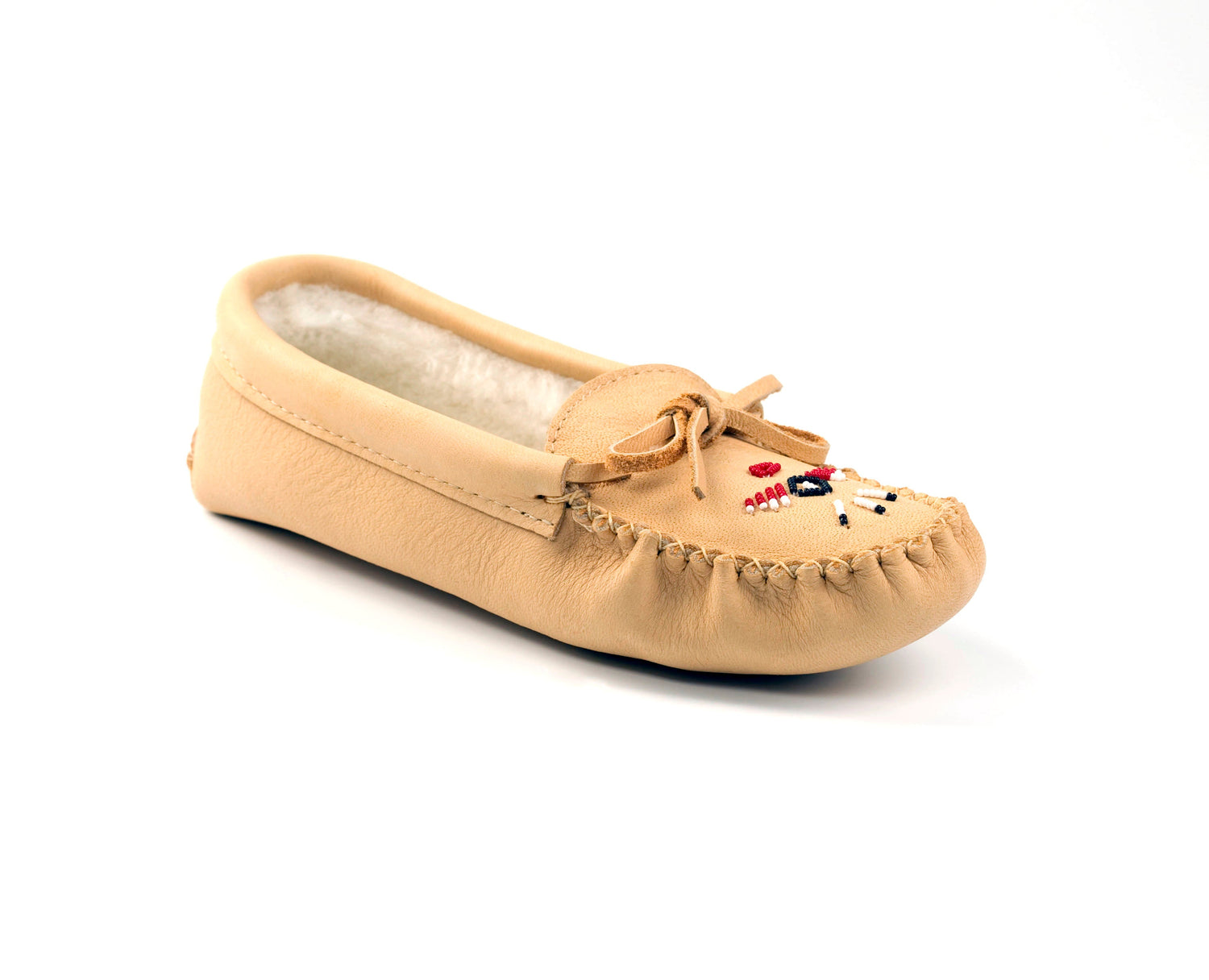
Moccasins: A Cultural Tapestry of Comfort and Connection
Share
Moccasins: A Cultural Tapestry of Comfort and Connection
Moccasins are more than just footwear; they are a profound cultural artifact with a rich history spanning centuries across North America. From the word's origins in Algonquian languages, such as Powhatan's "makasin" or Ojibwe's "makizin," meaning "footwear," moccasins have served a practical purpose while embodying the artistry, identity, and spirituality of various Indigenous communities. Their story is one of adaptation, beauty, and enduring legacy.
A Deep-Rooted History
Before the arrival of European settlers, Indigenous peoples across what is now Canada and the United States wore moccasins as essential protection for their feet. The design and materials used were a direct reflection of the specific environment and lifestyle of each tribe.
- Materials: Moccasins were traditionally made from the hides of animals native to the region, such as deer, elk, moose, and buffalo. The hides were carefully cleaned, stretched, and dried, often using traditional techniques like smoking to achieve a specific texture and colour. The sinew from the animal was then used as thread for stitching.
- Regional Variation: The diverse terrains of North America led to two primary types of moccasin construction.
- Soft-Soled Moccasins: Common among Woodland tribes in the eastern part of the continent, these moccasins had a single piece of soft leather for the sole and upper. This design was ideal for walking quietly on the forest floor, covered in leaves and soft earth.
- Hard-Soled Moccasins: Developed by Plains tribes to withstand the rough, rocky, and often arid terrain of the prairies, these moccasins featured a tough rawhide sole sewn onto a softer leather upper. This provided enhanced durability and protection against stones and cacti.
- Arctic and Subarctic Moccasins: Tribes in colder climates designed their footwear to fit inside snowshoes, often with thick fur linings for warmth.
These regional differences in design, along with unique decorative motifs, allowed members of different tribes to recognize one another simply by their footwear.
Moccasins as Symbols of Identity and Artistry
Moccasins were not just functional; they were a canvas for storytelling and a testament to an individual's or tribe's heritage. The artistry and craftsmanship passed down through generations made each pair a unique work of art.
- Decorative Elements: While early decorations included quillwork, paint, and fringe, the introduction of European goods during the fur trade brought new materials like glass beads and silk thread. Indigenous artists quickly adopted these materials, creating stunning, intricate patterns. Floral designs became particularly popular, though they often incorporated traditional geometric shapes and symbols.
- Cultural Significance: Moccasins often conveyed deep meaning. The choice of animal hide, the beading patterns, and even the colors used could represent a person's clan, community, or personal history. For example, some Plains tribes created moccasins with fully beaded soles, which were worn for special occasions where the wearer might be sitting with their legs outstretched, allowing the soles to be admired.
The Gifting Tradition
The act of gifting moccasins holds profound meaning within many Indigenous cultures. It is not merely an exchange of an object but a symbolic gesture that honors the recipient and their journey.
- Honouring a Journey: Moccasins are often gifted to mark significant life events, such as a baby's birth, a marriage, or a new role within the community. The gift symbolizes a wish for the person to "walk a good path" in life, to move forward with pride, respect, and strength. The famous adage "walk a mile in my shoes" is often mistakenly attributed to Indigenous cultures, but the true tradition of gifting moccasins is far more nuanced, signifying a shared journey and mutual respect.
- An Expression of Respect: When moccasins are given to an honored guest or dignitary, it signifies a deep welcome and respect. It is an invitation to walk together in a good way, acknowledging the journey they have taken and the one they are about to embark on.
The Evolution of Moccasins: From Tradition to Modernity
Over time, moccasins have evolved, adapting to new materials and serving a wider range of purposes. This evolution reflects a blend of traditional craftsmanship and modern innovation.
- Early Adaptation: As European settlers adopted moccasins for their comfort and durability, the design began to influence mainstream footwear. Features like the gathered toe and soft construction can be seen in the design of modern loafers, boat shoes, and casual footwear.
- The Modern Moccasin: Today, the term "moccasin" is used more broadly to describe a type of comfortable footwear, often with a soft leather upper and a durable, flexible sole. While mass-produced versions exist, authentic moccasins continue to be made by Indigenous artists and artisans who carry on traditional techniques. These modern moccasins often incorporate new materials like rubber soles, fleece linings, and memory foam insoles to provide contemporary comfort and function while maintaining the classic, handcrafted aesthetic.
- A Living Legacy: The continued creation of authentic moccasins is a powerful act of cultural preservation. Indigenous artists teach new generations the skills of hide preparation, beadwork, and stitching, ensuring that this living tradition endures. By purchasing authentic moccasins from Indigenous makers, consumers support this rich heritage and contribute to the economic well-being of these communities. The moccasin remains a symbol of connection—to the land, to history, and to the enduring spirit of the people who created them.




2 comments
Breath taking!!!
Wunderbar!!!